博文
New York City Hall一瞥
|||
New York City Hall一瞥
黄安年文 黄安年的博客/2015年7月30日清晨美东时间;傍晚北京时间发布
纽约市政大厅是纽约市著名历史建筑物,已经有204年历史。昨天午间,我来到这里参观。下面的照片19张是在参观时随机拍摄的,四层及以下是可供参观的,进入市政厅需要安检。
1,
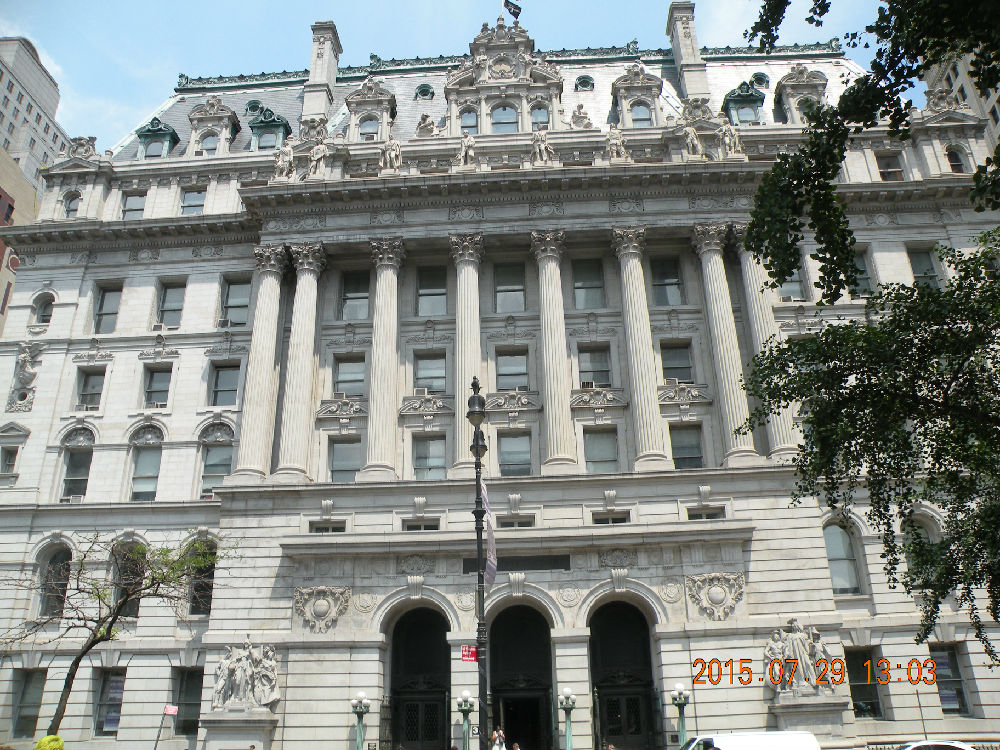
2,

3,

4,
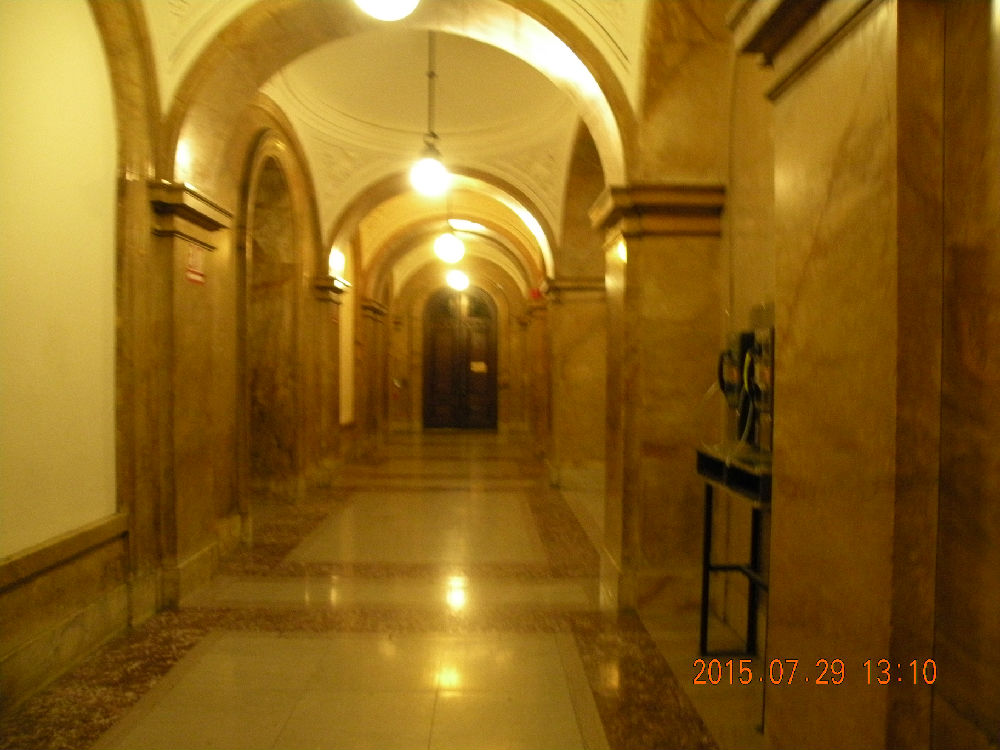
5,

6,
7,

8,
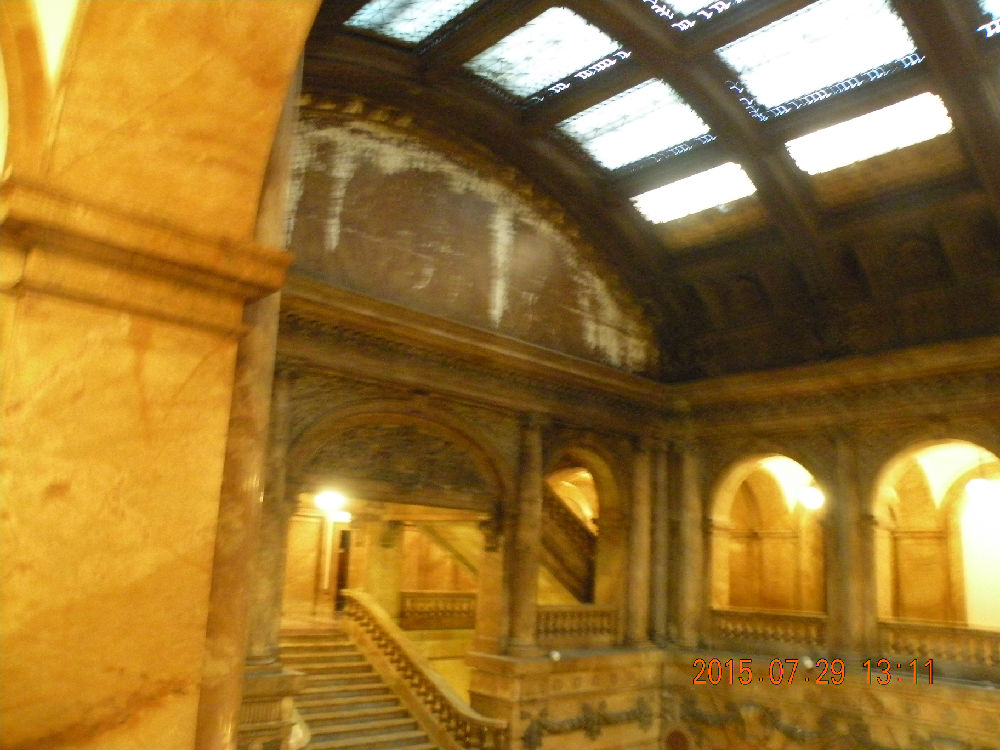
9,

10,
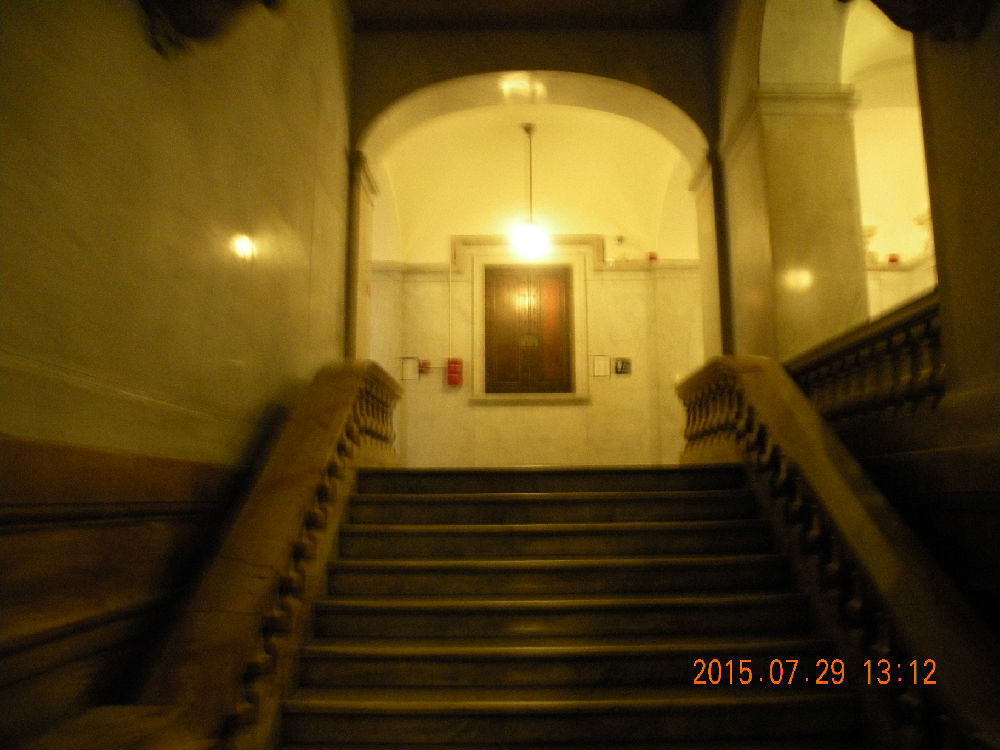
11,
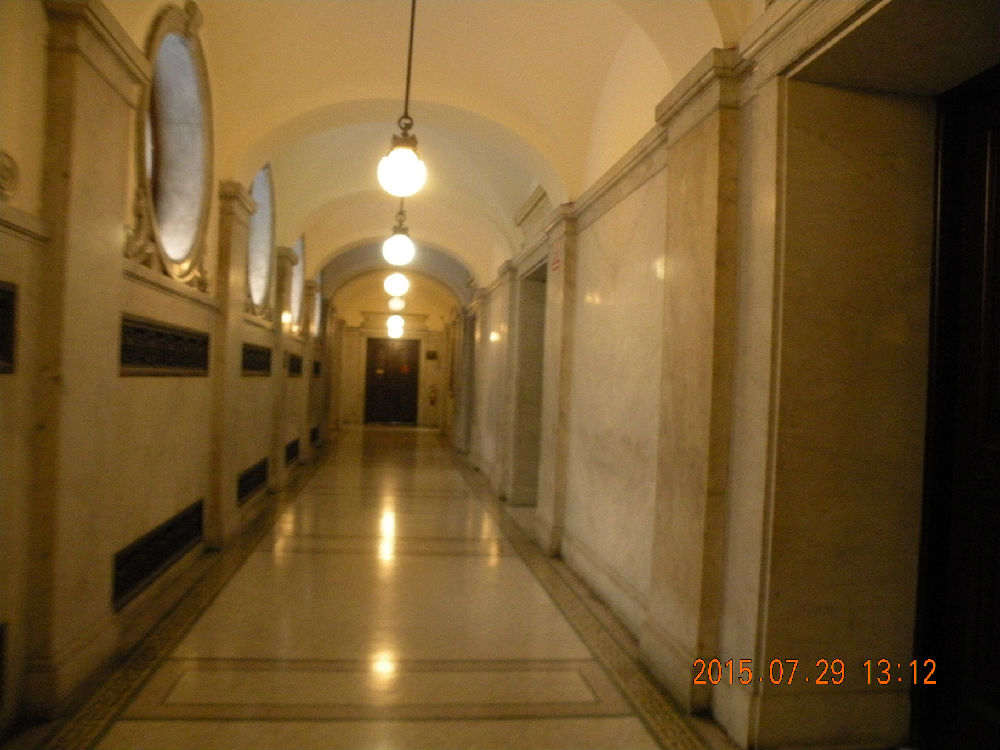
12,
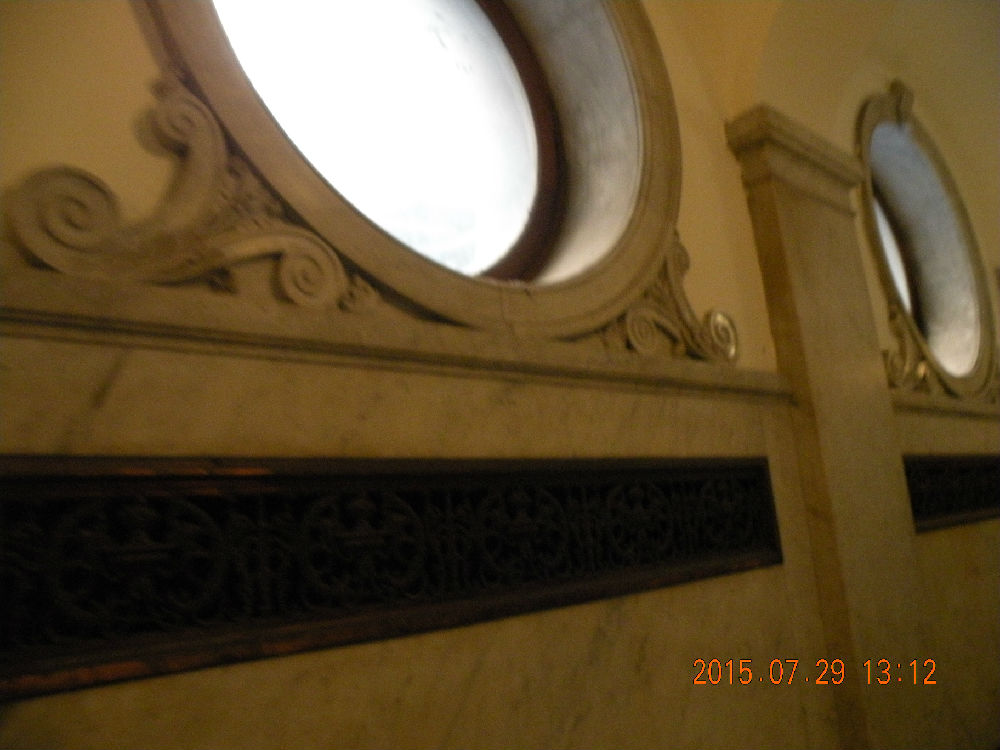
13,

14,

15,

16,

17,

18,

19,

&&&&&&&&&&&&&&&&&&
New York City Hall
From Wikipedia, the free encyclopedia
Jump to: navigation,search
Coordinates:40°42′46″N74°00′21″W40.7127°N74.0059°W
City Hall | |
New York City Hall | |
Location | City Hall Park |
Built | 1811 |
Architect | |
Architectural style | exterior: |
Governing body | City of New York |
NRHP Reference # | 66000539 |
Significant dates | |
Added to NRHP | October 15, 1966[3] |
Designated NHL | December 19, 1960[4] |
Designated NYCL | exterior: February 1, 1966 |
New York City Hall is located at the center of City Hall Park in the Civic Centerarea of Lower Manhattan, New York City, between Broadway, Park Row,and Chambers Street.The building is the oldest city hall in the United States that still houses its originalgovernmental functions,[5] such as the office of the Mayor of New YorkCity and the chambers of the New York City Council.While the Mayor's Office is in the building, the staff of thirteen municipalagencies under mayoral control are located in the nearby ManhattanMunicipal Building, one of the largest government buildings in theworld.
Constructed from 1810 to 1812,[1] New York City Hall is a National HistoricLandmark and is listed on the NationalRegister of Historic Places.[4][6][7] Both its exterior (1966) and interior (1976) aredesignated New YorkCity landmarks.[2]
Contents
[hide]
History and description[edit]
New York's first City Hall was built by the Dutch in the 17th century near 73 Pearl Street.[8] The city's second City Hall, built in 1700, stood on Wall and Nassau Streets. That building was renamed Federal Hall after New York became the first official capital of the United States after the Revolutionary War. Plans for building a new City Hall were discussed by the New York City Council as early as 1776, but the financial strains of the war delayed progress. The Council chose a site at the old Common at the northern limits of the City, now City Hall Park.
City Hall at night
In 1802 the City held a competition for a new City Hall. The first prize of$350 was awarded to Joseph-François Mangin and JohnMcComb, Jr.. Mangin, who was the principal designer,[1] studied architecture in his native Francebefore becoming a New York Citysurveyor in 1795 and publishing an official map of the city in 1803. Mangin wasalso the architect of the landmark St. Patrick's Old Cathedralon Mulberry Street.McComb, whose father had worked on the old City Hall, was a New Yorker anddesigned Castle Clinton in Battery Park. He would supervisethe construction of the building, and designed the architectural detailing aswell.[1]
Construction of the new City Hall was delayed after the City Councilobjected that the design was too extravagant. In response, McComb and Manginreduced the size of the building and used brownstoneat the rear of the building to lower costs; the brownstone, along with theoriginal deteriorated Massachusetts marblefacade, quarried from Alford, Massachusetts,was replaced with Alabamalimestone in 1954 to 1956. Labor disputes and an outbreak of yellowfever further slowed construction. The building was not dedicated until1811, and opened officially in 1812.
The building's Governor's Room hosted President-electAbrahamLincoln in 1861, and his coffin was placed on the staircase landing acrossthe rotunda when he lay in state in 1865 after his assassination. UlyssesS. Grant also lay in state beneath the soaring rotunda dome as did Colonel Elmer Ephraim Ellsworth, first Union officerkilled in the Civil War and commander of the 11th New York VolunteerInfantry Regiment (First Fire Zouaves). The Governor's Room, which is usedfor official receptions, also houses one of the most important collections of19th century American portraiture and notable artifacts such as GeorgeWashington's desk.
The Outer Room is adjacent to the traditional Mayor's office, which is asmall space on the northwest corner of the first floor. The Ceremonial Room iswhere the mayor would meet officials and hold small group meetings.
There are 108 paintings from the late 18th century through the 20th. The New York Times declared it "almostunrivaled as an ensemble, with several masterpieces."[9] Among the collection is JohnTrumbull’s 1805 portrait of Alexander Hamilton, the source of the face onthe United States ten-dollar bill. Therewere significant efforts to restore the paintings in the 1920s and 1940s. In 2006 a new restoration campaign began for 47paintings identified by the Art Commission as highest in priority.
On July 23, 2003 at 2:08 p.m., City Hall was the scene of a rare politicalassassination. Othniel Askew, a political rival of City Councilman James E. Davis, opened fire with apistol from the balcony of the City Council chamber. Askew shot Davis twice, fatallywounding him. A police officer on the floor of the chamber then fatally shotAskew. Askew and Davishad entered the building together without passing through a metal detector, acourtesy extended to elected officials and their guests. As a result of thesecurity breach, then-Mayor MichaelBloomberg revised security policy to require that everyone entering thebuilding pass through metal detectors without exception.[10]
City Hall, Park Row and City Hall Park,1911. The structure on the right is the Manhattanstation for the cable cars which ran across the BrooklynBridge
Architecture[edit]
City Hall, from the Historic American Buildings Survey,with the Manhattan Municipal Building in thebackground on the right
The Chamber of the Board of Councilmen in 1868
Although Mangin and McComb designed the building, which was constructedbetween 1810 and 1812, it has been altered numerous times over the years, withthe alteration often designed by noted architects:[1][2]
1860 - Leopold Eidlitz
1898 - John H. Duncan
1903 - William Martin Aiken
1907, 1912, 1915, 1917 - Grosvenor Atterbury
1956 - Shreve, Lamb & Harmon
1998 - Cabrera Barricklo
The architectural style of City Hall combines two noted historical movements,French Renaissance, which can beseen in the design of the exterior, and American-Georgian in the interior design. The buildingconsists of a central pavilion with two projecting wings. The design of CityHall influenced at least two later civic structures, the TweedCourthouse and the Surrogate's Courthouse. The entrance,reached by a long flight of steps, has figured prominently in civic events forover a century and a half. There is a columned entrance portico capped by abalustrade, and another balustrade at the roof. The domed tower in the centerwas rebuilt in 1917 after the last of two major fires. The originaldeteriorated Massachusetts marble facade,quarried from Alford, Massachusetts,with brownstone on the rear, was completely reclad with Alabamalimestone above a Missourigranite base in 1954-6.
On the inside, the rotunda is a soaring space with a grand marble stairwayrising up to the second floor, where ten fluted Corinthian columns support thecoffered dome, which was added in a 1912 restoration by Grosvenor Atterbury.[2] The rotunda has been the site of municipal as well as national events. AbrahamLincoln and Ulysses S. Grant lay in state here, attractingenormous crowds to pay their respects. City Hall is a designated New York City landmark. It is alsolisted on the New York State and National Registers of HistoricPlaces.
Functions[edit]
Official receptions are held in the Governor's Room, which has hosted manydignitaries including the Marquis de Lafayette and AlbertEinstein.
The historic Blue Room is where New York City mayors have been giving official press conferences for decades and is often used for bill-signing ceremonies.
Room 9 is the press room at City Hall where reporters file stories in cramped quarters.
The steps of City Hall frequently provide a backdrop for politicaldemonstrations and press conferences concerning city politics. Live, uneditedcoverage of events at City Hall is carried on NYCTV channel 74, aCity Government-access television (GATV)official cableTV channel.
Fencing surrounds the building's perimeter, with a strong security presenceby the New York City Police Department.Public access to the building is restricted to tours and to those with specificbusiness appointments.
Surroundings[edit]
City Hall Park
The control room at the subway station underneath CityHall
Neighborhood[edit]
The area around City Hall is commonly referred to as the Civic Center. Most of the neighborhoodconsists of government offices (city, state and federal), as well as anincreasing number of upscale residential dwellings being converted from oldercommercial structures. Architectural landmarks such as St. Paul's Chapel, St. Peters Church,the Woolworth Building, TweedCourthouse, the Manhattan Municipal Building, the ParkRow Building, One Police Plaza, and the BrooklynBridge surround City Hall. City Hall Parkis approximately three blocks away from the site of the World Trade Center. PaceUniversity's New York Citycampus is located across Park Row from City Hall.[11]
Subway stations[edit]
Located directly under City Hall Park is City Hall subway station, theoriginal southern terminal of the first serviceof the New York City Subway built by the Interborough Rapid Transit Company(IRT). Opened on October 27, 1904, this station beneath the public area infront of City Hall was designed to be the showpiece of the new subway.Considered to be one of the most beautiful subway stations in the system, thestation is unusually elegant in architectural style. The platform and mezzaninefeature Guastavino tile, skylights, colored glass tile workand brass chandeliers. Passenger service was discontinued on December 31, 1945,although the station is still used as a turning loop for 6<6> trains.
Another station named City Hall (NR trains) also exists on the BMTBroadway Line, albeit on the western side of City Hall and not directlyunder it. This station was built in 1912 for the Brooklyn–Manhattan TransitCorporation (BMT).
Other nearby, open subway stations are BrooklynBridge – City Hall / Chambers Street (456<6>JZ trains) and ChambersStreet – World Trade Center / Park Place (23ACE trains).
Renovations[edit]
In 2008, work began on a restoration of the building, after a centurywithout a major renovation. The construction included structural enhancements,upgrades to building services, as well as in-depth restoration of much of theinterior and exterior. Due to the complexity of the demands of the project, theNew York City Department of Design and Construction hired Hill International to provide constructionmanagement. Renovations were originally estimated to cost $104 million and takefour years, but ended up costing nearly $150 million and taking over fiveyears.[12][13]
In popular culture[edit]
New York City Hall has played a central role in several films and television series.
Spin City (1996–2002), set in City Hall, starred Michael J. Fox as a Deputy Mayor making efforts to stop the dim-witted Mayor from embarrassing himself in front of the media and voters.
City Hall (1996) starred Al Pacino as an idealistic Mayor and John Cusack as his Deputy Mayor, who leads an investigation with unexpectedly far-reaching consequences into an accidental shooting.
In the 1984 movie Ghostbusters the Mayor summons the protagonists to City Hall to discuss the impending end of the world.
City Hall is also referred to in the folk song "The Irish Rover" as performed by The Clancy Brothers, The Pogues and The Dubliners:
In the year of our Lord, eighteen hundred and six,
We set sail from the Coal Quay of Cork
We were sailing away with a cargo of bricks
For the grand City Hall in New York
Although the dates match those ofCity Hall, there is no recorded usage of Irish bricks in the building'sconstruction. However the song mentions "The Irish Rover" neveractually arrived in New York,but "struck a rock" and sank instead.
City Hall at dusk, 2007
See also[edit]
City Hall Post Office and Courthouse (New York City) - formerly located in the southwest corner of the park
References[edit]
Notes
1. ^ Jumpup to: abcdeWhite,Norval & Willensky, Elliot (2000). AIA Guide to New York City (4thed.). New York:Three Rivers Press. ISBN 978-0-8129-3107-5., p.69
2. ^ Jumpup to: abcdNew York City LandmarksPreservation Commission; Postal, Matthew A. (ed. and text); Dolkart,Andrew S. (text). (2009) Guide to New York City Landmarks (4th ed.) New York: John Wiley & Sons. ISBN978-0-470-28963-1, p.29
3. Jumpup ^"NationalRegister Information System". National Register of Historic Places.National Park Service. 2006-03-15.
4. ^ Jumpup to: ab"CityHall (New York)". National Historic Landmark summary listing.National Park Service. 2007-09-10.
5. Jumpup ^Michael M. Grynbaum (May 24, 2012). "TheReporters of City Hall Return to Their Old Perch". The New YorkTimes. Retrieved December 5, 2013.
6. Jumpup ^Shedd, Charles E. Jr. (October 28, 1959). "NationalSurvey of Historic Sites and Buildings: New York City Hall"(PDF). National Park Service.
7. Jumpup ^"Mr.Bloomberg, Perth Amboy Begs to Differ", NewYork Times (July 24, 2007). Accessed 2011-10-11
8. Jumpup ^"PublicTours: City Hall Sites and the Common" on "NYCDesign", thePublic Design Commission of the City of New York website
9. Jumpup ^Dunlap, David W. (December 6, 2006). "In NewYork, Taking Years Off the Old, Famous Faces Adorning City Hall". The New York Times. Retrieved 2010-08-07.
10. Jumpup ^Kolker, Robert (August 4, 2003). "KillerCompetition". New York. Retrieved 2010-08-07.
11. Jumpup ^http://www.pace.edu/about-us/all-about-pace/directions-to-all-campuses/new-york-city-campus/
12. Jumpup ^"NewYork City Hall Rehabilitation". ENR New York (November 11, 2013). November7, 2013. Retrieved 22 July 2015.
13. Jumpup ^Roberts, Sam (November 8, 2013). "AsCity Hall Changes Hands, Construction Will Go On". The New YorkTimes. Retrieved 22 July 2015.
https://en.wikipedia.org/wiki/New_York_City_Hall
https://blog.sciencenet.cn/blog-415-909391.html
上一篇:坐落在纽约City Hall Park的Horace Greeley塑像
下一篇:林则徐像在纽约唐人街